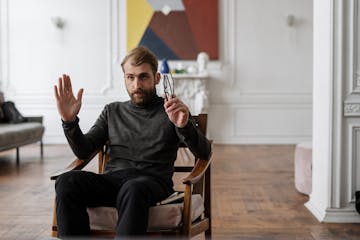The paracentral lobe is a brain region that plays a fundamental role in various cognitive and motor functions in humans. Located in the brain, specifically in the left and right cerebral hemisphere, the paracentral lobe has unique characteristics that distinguish it from other brain areas.
Location of the Paracentral Lobe
The paracentral lobe is located in the medial part of the frontal and parietal lobes of the brain, just in front of Rolando's fissure that separates the frontal and parietal lobes. This region extends from the primary motor cortex in the precentral gyrus to the primary somatosensory cortex in the postcentral gyrus. This strategic location gives the paracentral lobe a crucial role in the integration of motor and sensory information.
Characteristics of the Paracentral Lobe
The paracentral lobe is characterized by containing brain areas that are They are responsible for processing information related to voluntary movement and tactile sensitivity of the body. In anatomical terms, this lobe presents a specific cortical organization, with a topographic representation of the different parts of the body in its motor and sensory areas. This representation is known as the motor homunculus and the sensory homunculus.
Functions of the Paracentral Lobe
The functions of the paracentral lobe are diverse and fundamental for the correct functioning of the nervous system. Some of the main functions include:
1. Motor Control
The paracentral lobe houses the primary motor cortex, also known as the primary motor area or Brodmann area 4. This region plays a crucial role in planning, executing and controlling voluntary movements of the body. Each part of the body is represented somatotopically in this area, allowing precise coordination of movements.
2. Tactile Sensitivity
In addition to its motor function, the paracentral lobe also contains the primary somatosensory cortex, where tactile information coming from throughout the body is processed. This region is responsible for discriminating and processing sensations such as touch, pressure, temperature, and pain. Like the primary motor cortex, the primary somatosensory cortex has a somatotopic organization, meaning that different areas of this region correspond to different parts of the body.
3. Sensorimotor Integration
One of the key functions of the paracentral lobe is the integration of sensory and motor information for the precise execution of movements. This sensorimotor integration allows, for example, a person to coordinate their movements when writing, playing a musical instrument or performing sports activities. To achieve this integration, the paracentral lobe communicates with other brain areas, such as the cerebellum and the basal ganglia.
4. Cognitive Functions
In addition to its role in motor control and tactile sensitivity, the paracentral lobe also participates in various cognitive functions. These include the planning and execution of complex tasks that require coordination between different parts of the body, as well as the perception of one's own body in space (known as body awareness). The integrity of the paracentral lobe is crucial for the correct functioning of these cognitive functions.
Alterations in the Paracentral Lobe
Due to its importance in various brain functions, alterations in the paracentral lobe They can have significant effects on a person's motor, sensory and cognitive abilities. Some medical conditions and injuries that affect the paracentral lobe include:
1. Strokes
Strokes, such as cerebral infarctions or intracerebral hemorrhages, can affect the blood supply to the paracentral lobe, resulting in brain damage and deficits in motor control and tactile sensitivity. Neurological rehabilitation is essential in these cases to recover the lost function to the extent possible.
2. Traumatic Injuries
Traumatic head injuries, such as concussions or accident injuries, can damage the paracentral lobe and cause alterations in motor coordination and tactile perception. Neuropsychological evaluation and occupational therapy are key in the treatment of these patients to maximize their recovery.
3. Neurological Diseases
Some neurological diseases, such as Parkinson's, multiple sclerosis or cerebral palsy, can affect the function of the paracentral lobe and, therefore, the person's ability to move and feel. Treatment of these diseases usually involves a combination of drugs, physical and occupational therapy, as well as psychological interventions.
Final Reflections
In summary, the paracentral lobe is a key brain region that plays a key role in a fundamental role in motor control, tactile sensitivity, sensorimotor integration and other cognitive functions. Its strategic location in the brain and its specific cortical organization make it a crucial element for the precise execution of movements and sensory perception of the body. Given its importance, it is essential to understand the characteristics, location and functions of the paracentral lobe to effectively address alterations that may affect this brain region.
Author: Psicólogo Rafael Gómez


